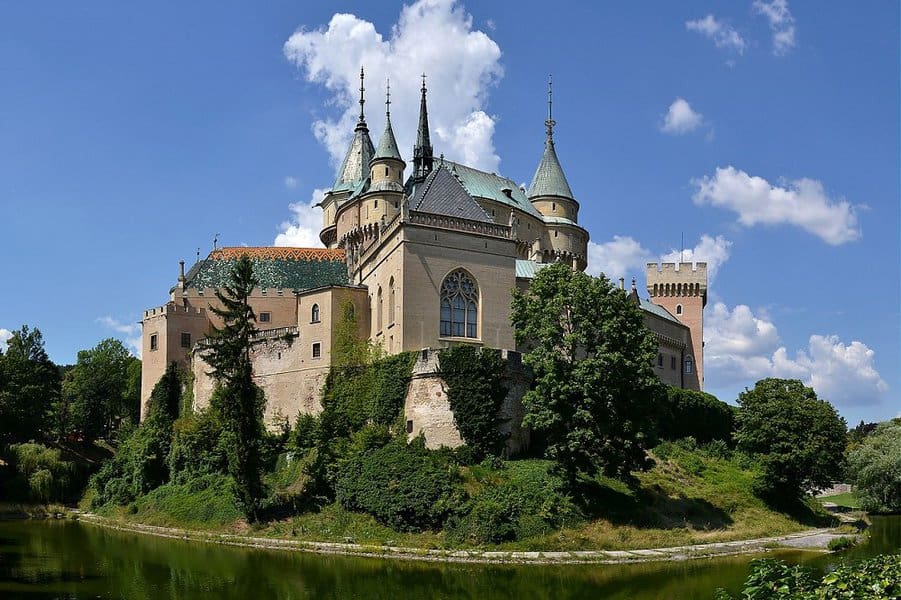
Wikimedia Common
13 Famous Medieval Castles
Medieval castles sprang up across Europe and other parts of the world during the Middle Ages. They first appeared around the 8th to 10th centuries but exploded in popularity during the 11th century. Castles differ from a mansion or villas in that they are fortified residences, symbols of power, and government buildings.
They weren’t built strictly for pleasure, having a strong emphasis on defending against attacks. Many began as primitive castles, but as technology evolved, so did these massive structures. Medieval castles often feature stone, large towers, and moats and for the most part were called home by royalty, nobles, and lords. Below is a look at some of the most famous Medieval castles in history
13 Medieval Castles That Will Take Your Breath Away
1. Bonjnice Castle
The breathtaking medieval Bonjnice Castle sits in Bojnice, Slovakia. It’s famous for looking like a castle out of a fairy tale. Many fairy tales and fantasy movies shoot at the location for this reason.
Slovakia’s most famous landmark is the 12th-century Romanesque Medieval castle with Gothic and Renaissance elements. The stone castle came into the possession of Matthew III Csak from King Ladislaus V of Hungary. Eventually, it became one of the most famous tourist attractions in Slovakia.
2. Windsor Castle

sloukam/Shutterstock
Windsor Castle has a long and rich history that few other castles share. Often linked with the British royal family, Windsor Castle is an architectural marvel and the longest-occupied castle in Europe. In the 11th century, William the Conqueror led the Norman Invasion of England and built the iconic Medieval castle. During King Henry I’s reign, it became the royal residence of the ruling monarch.
The lavish castle in Berkshire underwent many changes and restoration efforts over the years. The castle started as a simple motte-and-bailey but transformed into a fortified castle and symbol of England’s strength. In the 15th century, the breathtaking Gothic-style St. George’s Chapel was added.
3. Edinburgh Castle
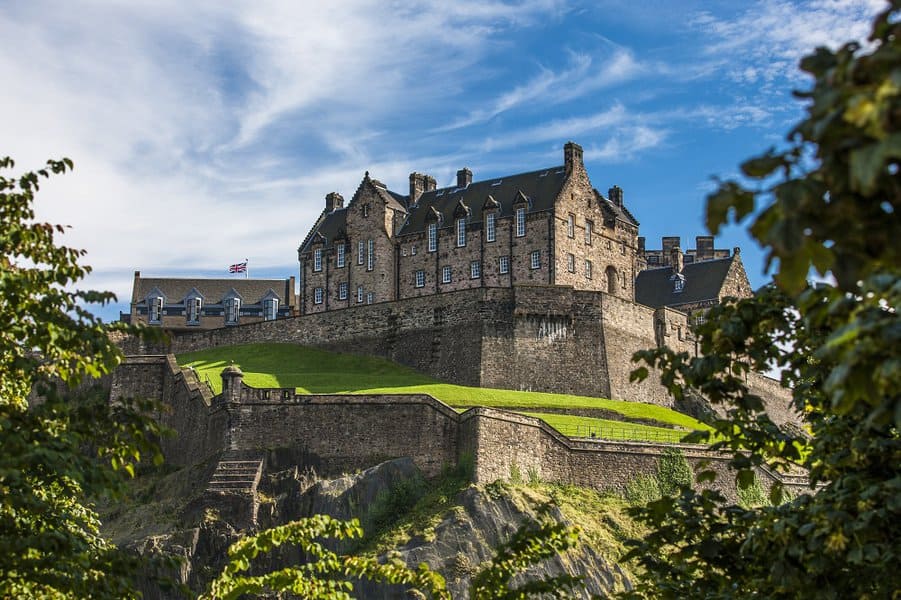
MarcAndreLeTourneux/Shutterstock
Since the Iron Age, humans have lived on Castle Rock, which now occupies Scotland’s most famous tourist attraction, Edinburgh Castle. David I built the castle sometime in the 12th century, and it soon became the center of the Kingdom and a reflection of Scotland’s power.
The Medieval castle played a pivotal role in numerous wars and events. It’s considered the most attacked castle in Great Britain, with 26 sieges occurring since it was built. It’s now a historical location in Scotland visited by hundreds of thousands of tourists every year.
4. Bran Castle
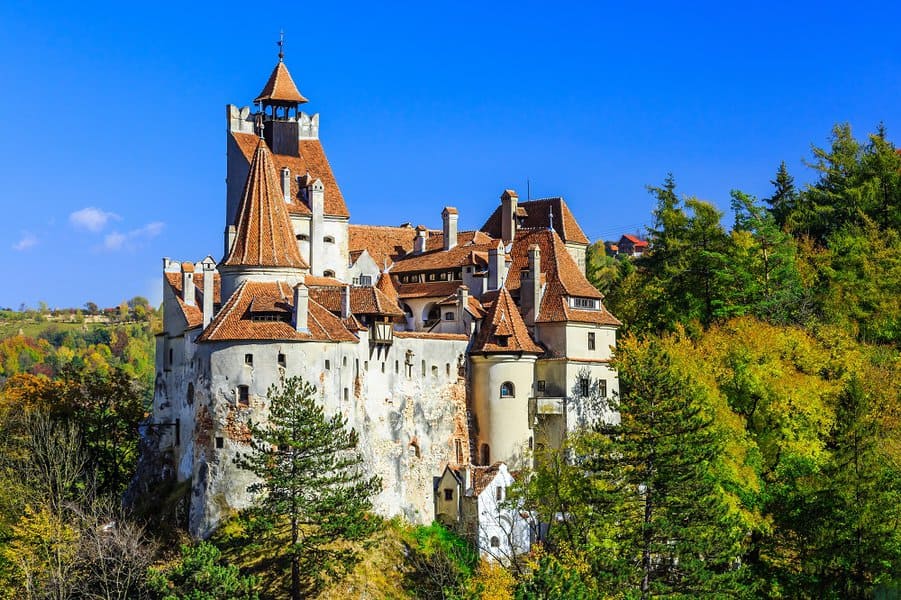
SCStock/Shutterstock
In Transylvania sits one of history’s most horrifying locations, Dracula’s castle. Locals refer to the historic Romania landmark as Bran Castle. The Teutonic Order built the wooden fortress in 1212. After the Mongols destroyed the castle, a stone fortress went up in its place in the late 1300s.
In the mid-1400s, Vlad the Impaler ruled from the throne of Bran Castle. Better known as Vlad Dracula, author Bram Stoker used Vlad’s last name as inspiration for his novel Bram Stoker’s Dracula. However, Dracula and his castle bear no resemblance to Vlad or the iconic Bran Castle, although that hasn’t stopped fans from connecting the fictional Dracula Castle to Bran, despite there being no evidence to support that theory.
5. Malbork Castle
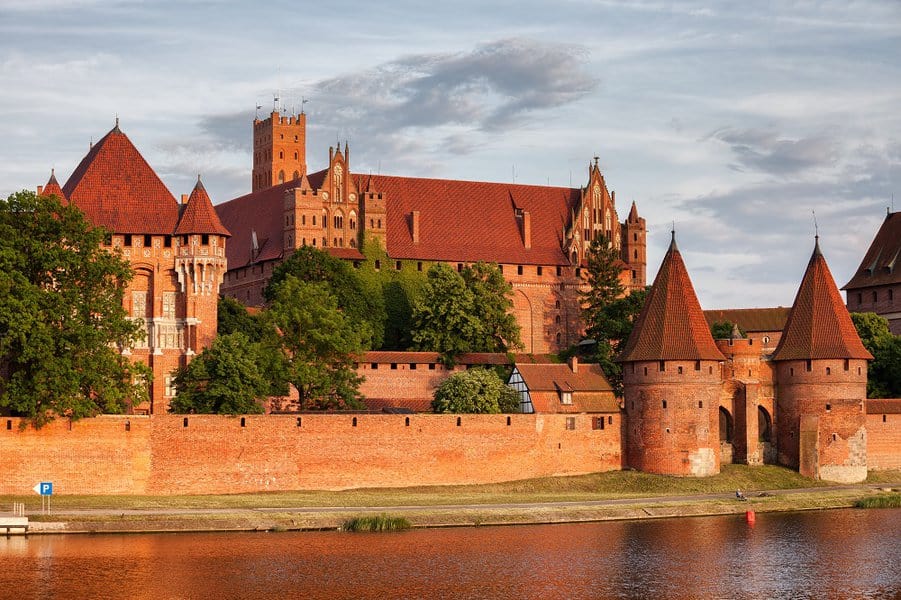
Artur Bogacki/Shutterstock
From 1274 to 1406, Teutonic Knights constructed the then-largest brick castle in the world, Malbork Castle, in Poland. Later, it came into the possession of Poland’s King Casimir IV and remained in the Royal Family until Germany took control for 170 years.
The stunning medieval fortress is a work of art that has experienced several restoration periods. The castle boasts a mausoleum underneath the Chapel of St. Anne and is one of the most famous tourist attractions in Poland.
6. Hedingham Castle

BJ Clayden/Shutterstock
In 1086, William the Conqueror awarded Hedingham manor to Aubrey de Vere I who constructed Hedingham Castle. The castle went up around the 12th century, with the keep between 1130 and 1140.
The Medieval castle sits in the village of Hedingham in Essex and is one of the best-preserved medieval structures. It’s often a prime location for filming and photography. It’s also a significant tourist attraction hosting events weekly.
See more about - 12 Famous Abandoned Castles From Around The World
7. Bodiam Castle
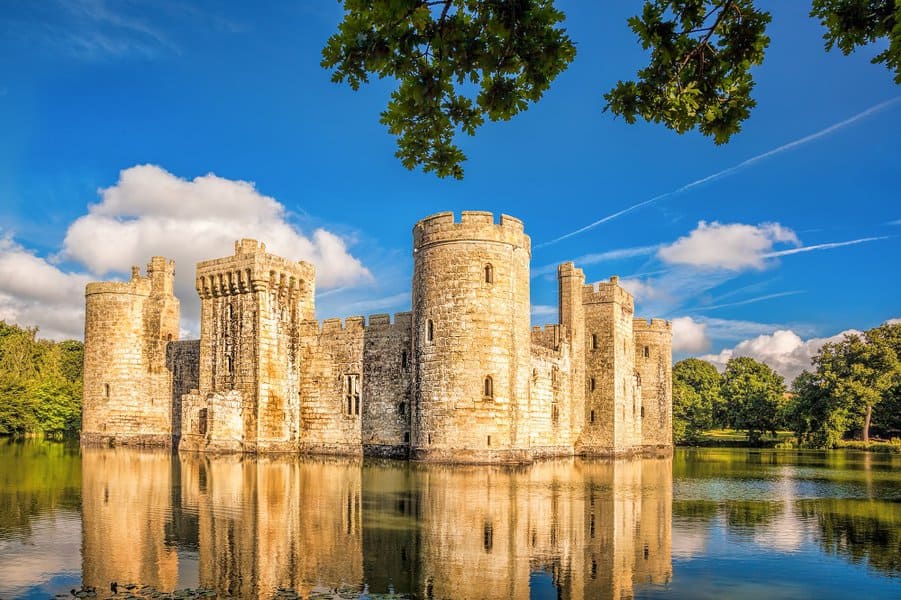
Tomas Marek/Shutterstock
In 1385, a former knight of King Edward III, Sir Edward Dalyngrigge, built 14th-century Bodiam Castle in East Sussex, England. He aimed to protect the region from a possible French invasion during the Hundred Years’ War. Dalyngrigge put great work into the surrounding landscape, placing it in the middle of an artificial moat. The moat was for defensive purposes but also to make it look bigger.
The quadrangular Medieval castle includes a central courtyard, circular towers on each corner, and a curtain wall. The fantastic castle also contains a great hall, an outstanding kitchen, and a chapel.
It passed down through several generations of different families until the National Trust took control in the 1920s. The Trust continues restoring the historic site, a renowned tourist attraction. Bodiam Castle appears in several movies, notably the comedy classic Monty Python and the Holy Grail.
8. Corvin Castle
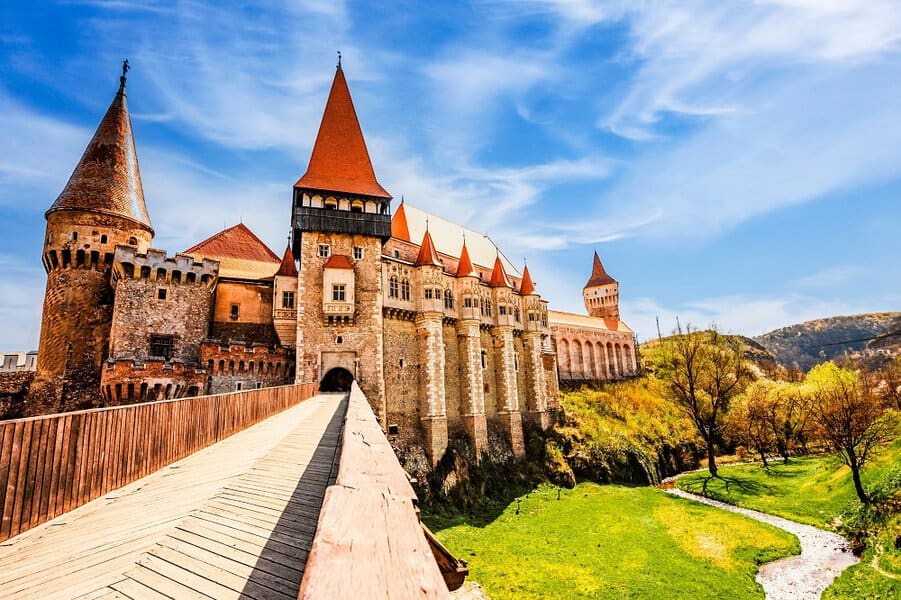
zedspider/Shutterstock
In the 1400s, construction began on an old keep which soon became the famous Corvin Castle. The Gothic-Renaissance castle is one of the Seven Wonders of Romania.
The imposing structure has stone carvings, tall towers with openings for weapons, and stunning architecture. It also consists of a dining hall, courtyard, and residence. According to legend, Vlad the Impaler was held prisoner in Corvin’s Castle at one point.
9. Château Gaillard
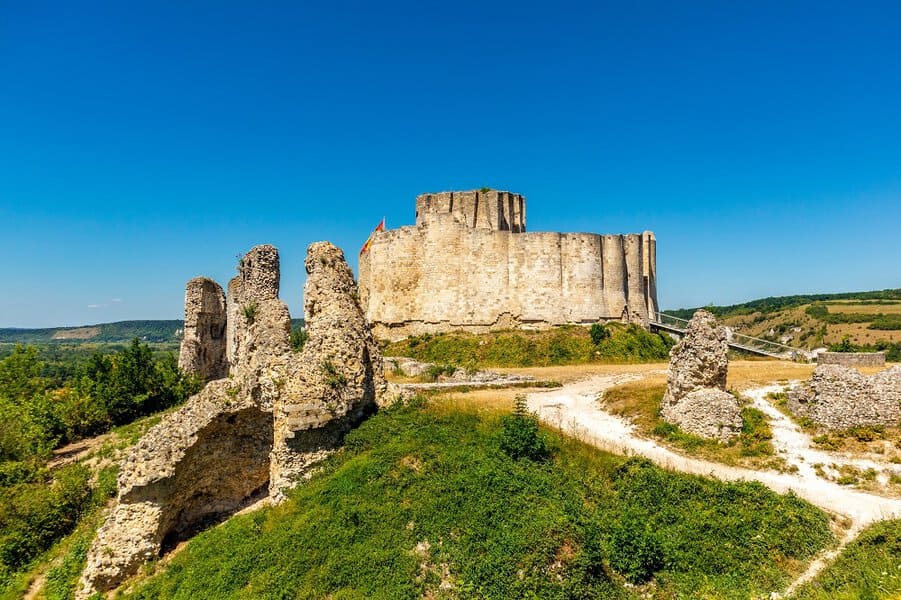
Oliver Hlavaty Photo/Shutterstock
In Normandy, France, is the famous bailey castle, Château Gaillard. It’s 59 miles northwest of Paris, overlooking the River Seine. Richard the Lionheart commissioned the construction of in 1196 when he was the King of England and the Duke of Normandy. It was one of the most expensive Medieval castles at the time, but it took only two years to construct. Like many rulers of the time, Richard feared an enemy attack. He ensured the castle had the best defense, including three enclosures, a keep, moats, and machicolations.
In 1204, the King of France, Philip II, conquered the castle after a long battle. France has largely controlled the castle since then. In 1599, King Henry IV ordered it destroyed. Now, only the ruins are left overseeing the land. It’s become a popular tourist attraction, with the inner bailey open during the spring months.
10. Dover Castle

Valerie2000/Shutterstock
Evidence suggests that an earthworks castle stood in the location of Dover Castle during the Iron Age in Dover, Kent, England. In AD 43, the Romans invaded, building two lighthouses that still stand in the area to this day. The different ruling powers added, upgraded, and enhanced the primitive castle over the centuries.
During the reign of King Henry II, Dover Castle began to take shape, becoming a symbol of England. The fortified castle improved its defense capabilities numerous times, adding giant towers, a keep, and a heavy artillery mount.
The tunnels beneath Dover became bomb shelters during World War II. It’s now one of England’s most important historical and archeological locations in the country. In the last few years, the government paid to restore the castle, helping it maintain its grasp on the crown of England’s top tourist attraction.
11. Warwick Castle

Premier Photo/Shutterstock
Many Medieval castles looked gorgeous but didn’t have defensive capabilities like Warwick Castle. The castle in Warwickshire, England is a legendary 14th-century castle and one of the best-fortified Medieval castles in the world. In 1068, William the Conqueror initially built it as a simple wooden motte-and-bailey.
During the 12th century, King Henry rebuilt the castle with stone adding a chapel and multiple rooms. As the Hundred Years War raged on, the front of the castle was refortified, becoming a prime example of 14th-century military architecture.
The front features a drawbridge over a moat, with a dry moat in the back. It remained a vital aspect of the ruling monarch until the 1600s. The Tussauds Group now owns the famous tourist attraction.
12. Leeds Castle
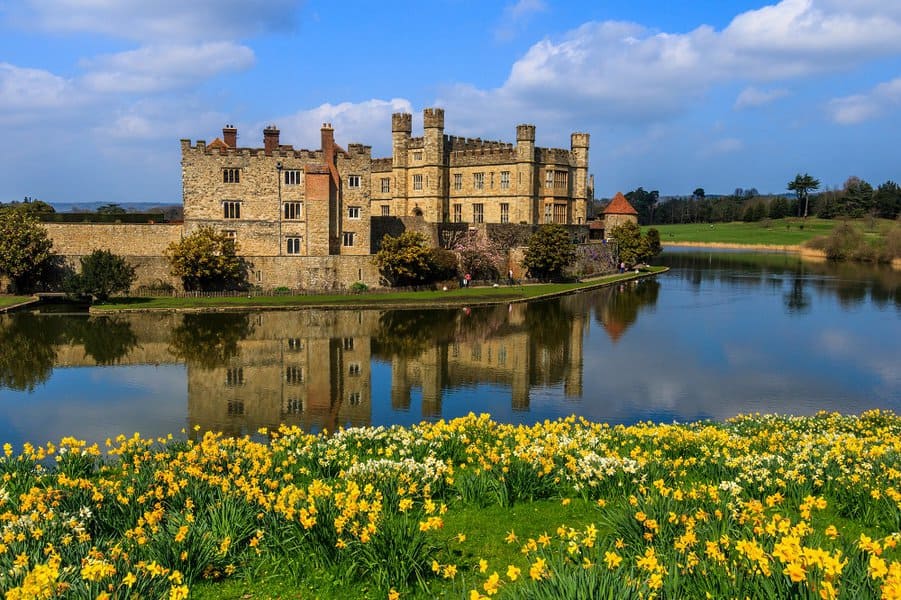
Tang Yiu Pan/Shutterstock
According to legend, a Saxon chief named Leed or Led built a wooden structure on two islands in the River Len. In the 1200s, it became a Norman stronghold, which turned it into a stone palace known as Leeds Castle. Later, it became the favorite residence of King Edward I.
Since he spent most of his time there, Edward transformed Leeds into a stunning sight, sitting in the middle of a lake. In the 16th century, King Henry VIII used it as a home for his first wife, Catherine of Aragon. It’s now one of the most famous Medieval castles featuring the famous Thorpe Hall drawing room, grand banquet hall, and incredible dining room.
13. Alnwick Castle
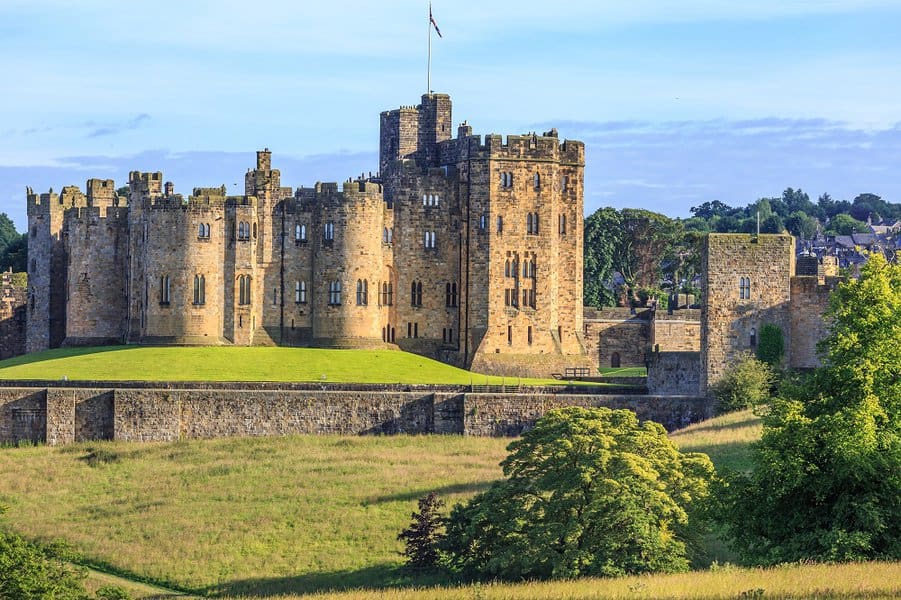
iLongLoveKing/Shutterstock
Alnwick Castle sits near the River Aln in Northumberland. The castle offers stunning landscape views and has undergone extensive restorations over the years. The first part of the castle went up in 1096, with various owners enhancing the residence.
At different times the British and Scottish ruled over the castle. Alnwick Castle is the seat of the 12th Duke of Northumberland, Ralph Percy, who is also the current resident of the fortification. It’s the second longest-occupied royal residence after Windsor Castle and a significant tourist attraction.
See more about - 12 Castles You Can Actually Rent On Airbnb



